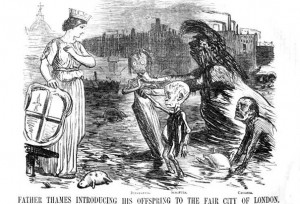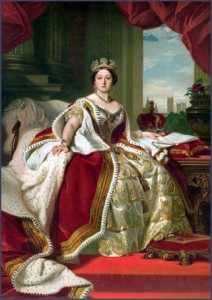This year marks the bicentenary of the birth of John Snow, Yorkshireman, physician and the father of epidemiology, the study of the patterns and causes of health and disease in populations. To mark the event, the London School of Hygiene and Tropical Medicine (LSHTM) has opened its doors to the public with a free exhibition – Cartographies of Life and Death: John Snow and Disease Mapping – about Snow’s pioneering work by which he discovered the true cause of cholera and employed methods of analysis and cartography which are still used today in many different fields.
The oldest of nine children and from the proverbial deprived background – his father was a coal haulier in the local yards in York – he was brought up in one of the poorest districts of the city, constantly at risk of flooding from the nearby River Ouse. A bright boy, he was apprenticed to a surgeon aged 14 in Newcastle upon Tyne where he first encountered cholera in 1831 when there was a major outbreak in the city. He came to London in 1836 to study for his medical degree, qualifying in 1844 and in 1850 was a founding member of the Epidemiological Society of London, formed after the 1849 cholera outbreak in the capital. Snow was interested in the physiology of respiration and, when a dentist friend of his asked him to observe his use of anaesthesia on his patients – the first time this had been done in Britain – Snow was intrigued and within a month had published tables on the vapour pressure of ether which led to his developing instruments for the accurate delivery of anaesthetics as opposed to the handkerchief over the mouth technique which had prevailed up to this point.
He became the most prominent authority on anaesthesia in the country. In fact, he became what would now be seen as a celebrity physician, administering chloroform to Queen Victoria when she gave birth to her last two children, a task she regarded as the downside of marital bliss. Her acceptance of the latest medical advance belies her image as a traditionalist and helped promote Snow’s methods and renown. When cholera struck again in 1848, this time in London, Snow’s earlier experience of the disease led him to question the prevailing orthodoxy of the time as to its cause. Most physicians believed it occurred due to an atmospheric “effluence” or “miasma” which was inhaled and spread through the lungs, whereas Snow’s first-hand experience of the illness in Newcastle 17 years before and his own respiratory studies had convinced him that the cause lay elsewhere. “He had argued that cholera had nothing to do with the lungs or a miasma in the air,” says Professor Paul Fine, Professor of Communicable Disease Epidemiology at the school. “William Farr, who compiled mortality statistics for the General Register Office and followed the miasmic route, believed cholera was a result of elevation, the higher up you were the purer the air. But Snow said that cholera infected the intestines and not the lungs and was certain the cause lay elsewhere, most likely through ingestion not respiration.” Cholera struck again in London in 1853 and, to prove his atmospheric theory, Farr gathered statistical evidence on the epidemic. You can prove many things with statistics and Farr was able to demonstrate his theory that the greater the elevation at which people lived above the River Thames, the less chance they had of catching cholera, so confirming his pure air/miasmic view.
Yet at the same time, he compiled details of the locations from where different water companies drew their water supplies and traced the deaths of people according to their water supplier. The two worst offenders were the Southwark and Vauxhall and Lambeth water companies which both drew their water from highly polluted parts of the Thames, which in densely-populated and industrialised central London was used as an untreated repository for human waste. Farr did not agree with Snow’s ingestion theory but provided him with the details of people who had died which led to Snow knocking on doors in the south London areas affected and questioning the survivors. He compared the sewage-polluted areas in terms of mortality to the unpolluted river areas recognising, as the LSHTM says, “the need to confirm the water source of each case and to assure comparability of the populations concerned.” In other words, he carried out the first, thorough cohort study in modern medicine, just as would be done today. He knew he was taking on the medical establishment and powerful business interests and so wanted to be absolutely sure of his facts. Snow’s practice was then in Soho and in August 1854, while he was still analysing his findings from the south London study, the next cholera outbreak began on his doorstep. “Chance favours the prepared mind,” says Professor Fine, “and he was absolutely the right man in the right place at the right time.”

It took the ‘Great Stink’ of the hot summer of 1858 to persuade MPs that London’s water supply and sewage system had to be improved
Within a fortnight there had been 550 deaths in the Soho area and the cause was a mystery. However, by speaking to local residents and again checking the addresses of those who had died, Snow became convinced that the epidemic was centred on a water pump in Broad Street (now Broadwick Street) and he argued his case until the local council removed the handle of the pump on 8 September, 1854. It is interesting to note how this Victorian outbreak triggered views from some people which exactly mirrored those more than a century later when AIDS first struck. Then as now, some said it was divine retribution from God on a sinful society, others that it was a conspiracy cooked up by the government while a few claimed that it didn’t even exist, all opinions expressed when HIV appeared. Although the outbreak was already in decline when Snow revealed his findings, since all those who were likely to be infected had been and others had fled the area, Snow’s logical, pragmatic approach had convinced both the medical authorities and the government of the correctness of his theory. Although some miasma advocates clung to their beliefs, a public notice in the exhibition dating from 1866 and posted in the Limehouse area after yet another cholera outbreak, clearly states that residents should “drink no water which has not previously been boiled.”

Snow’s detailed map of the Broad Street cholera outbreak of 1854 which clearly showed the illness centred on the street’s water pump (Wellcome Library, London)
Snow only ever produced two maps in his life – his study of the two London water companies revealing their sources of supply and a map showing the deaths from the Broad Street outbreak – but they were to prove immensely influential as building blocks of epidemiology. His methodology has been adopted in other fields of study such as education and criminology and a poll of British doctors in 2003 ranked him as the greatest physician of all time. Snow himself would only drink boiled water and even became vegetarian and teetotal for a decade until his health deteriorated and he returned to meat and wine. He died of a stroke in 1858 but not before he had seen Farr and others accept his theories and methodology. The exhibition includes many historical documents and ephemera and works by contemporary artists on related themes and there is even a pop-up water bar in Broadwick Street itself. Visitors will also be able to use a mobile website which integrates contemporary aspects of mapping such as GPS and Google Maps to travel from the main exhibition site on Keppel Street through Victorian London to Broadwick Street, which has a pub named after John Snow and a replica water pump in his memory- with no handle.
More information can be found here: http://johnsnowbicentenary.lshtm.ac.uk/ http://www.lshtm.ac.uk/ http://johnsnowbicentenary.lshtm.ac.uk/march-meeting-programme/



